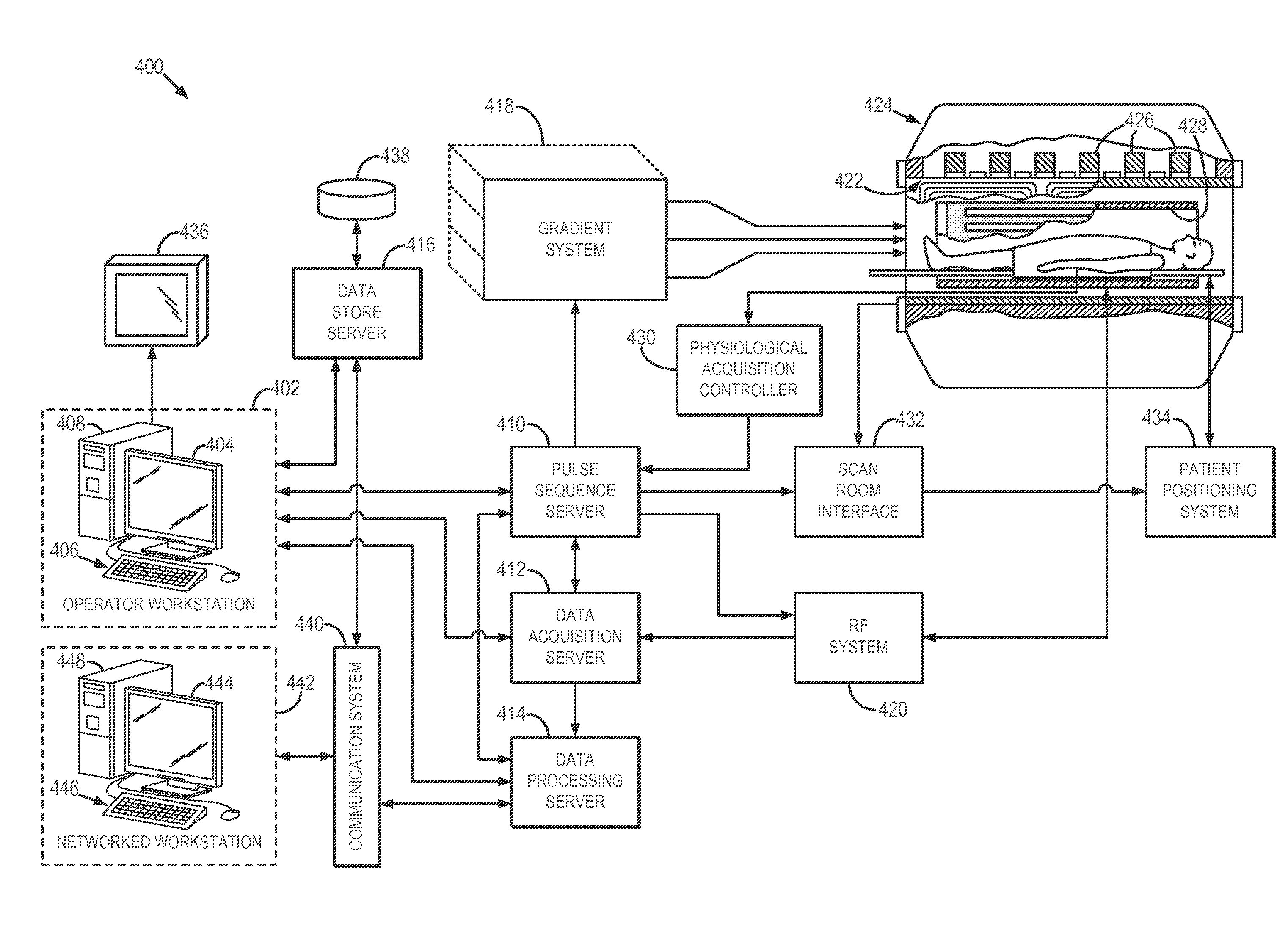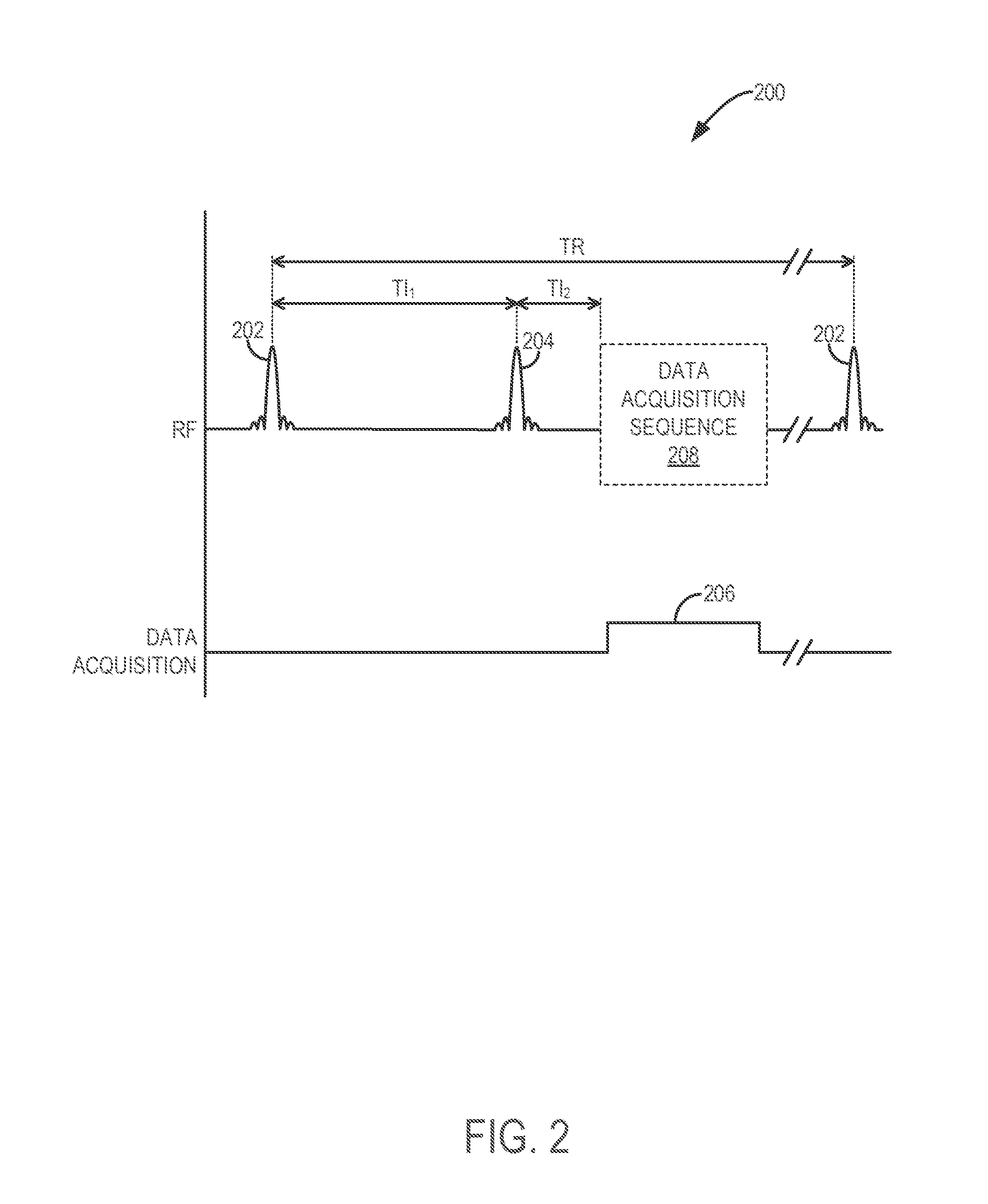Systems and methods for producing imaging biomarkers indicative of a neurological disease state using gray matter suppressions via double inversion-recovery magnetic resonance imaging
a magnetic resonance imaging and gray matter suppression technology, applied in the field of magnetic resonance imaging methods and systems, can solve the problems of inability to capture the extent of cortical pathology in ms, limited conventional techniques, and currently unapproved clinical use of high field strengths
- Summary
- Abstract
- Description
- Claims
- Application Information
AI Technical Summary
Benefits of technology
Problems solved by technology
Method used
Image
Examples
example
[0049]The relationship between cortical lesions (“CLs”) and white matter lesions (“WMLs”) in multiple sclerosis (“MS”) is poorly understood. In addition to their association with disease progression, CLs may also play a role in disease initiation. Thus, it was hypothesized that white matter lesions may be present along tracts directly connected with cortical lesions. As such, an experiment was performed to demonstrate such connectivity, using double inversion recovery (“DIR”) images for CL detection coupled with DTI-based probabilistic tractography.
[0050]Study participants, which are outlined in Table 1, included patients with relapsing-remitting MS with relative mild disease (EDSS2) performed a highly conservative scoring (according to the consensus recommendation). The other rater (rater 1) took a more inclusive approach, including smaller lesions. WM lesions were obtained with consensus, all scored on DIR image, with WV lesions being confirmed with T2 lesion maps.
TABLE 1Demograph...
PUM
 Login to View More
Login to View More Abstract
Description
Claims
Application Information
 Login to View More
Login to View More - R&D
- Intellectual Property
- Life Sciences
- Materials
- Tech Scout
- Unparalleled Data Quality
- Higher Quality Content
- 60% Fewer Hallucinations
Browse by: Latest US Patents, China's latest patents, Technical Efficacy Thesaurus, Application Domain, Technology Topic, Popular Technical Reports.
© 2025 PatSnap. All rights reserved.Legal|Privacy policy|Modern Slavery Act Transparency Statement|Sitemap|About US| Contact US: help@patsnap.com



